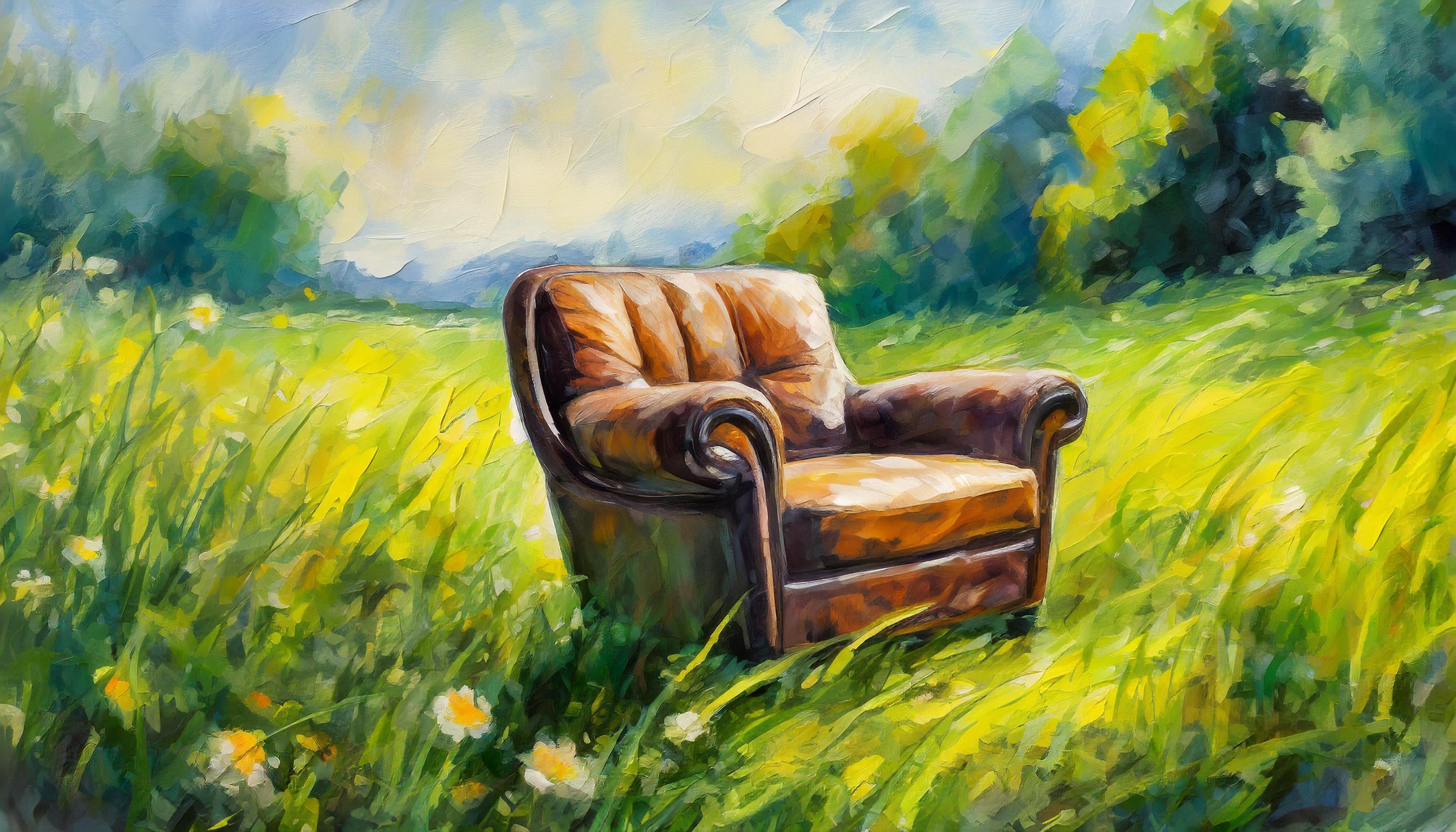Most interior designers have probably heard the buzz about alternative leathers made from mushrooms, pineapple, cactus and other plant-based resources. If you’ve walked the aisles of Heimtextil, you may have even seen some of these materials in person. But many designers have not yet had the chance to work with these plant-based leathers, says Suzanne Lee, the founder of Biofabricate, a conference for alternative materials. “Concerned consumers have driven a lot of media stories,” says Lee. “And there are amazing innovation stories happening: We can now grow a leatherlike material from the roots of mushrooms! Who doesn’t want to write that story? But then if you try to buy the materials, you’ll find that the companies are still scaling the technology.”
New York–based designer Liz Craig is among those who have been waiting for these materials to reach designers. “Truly sustainable, 100 percent plant-based leather alternatives are only just starting to be produced at a scale that is usable for furnishings,” she says. “Mirum [a plastic-free leather alternative made from rubber] began as sheets rather than rolls, so it wasn’t usable for something like a dining bench.” However, the market is changing rapidly to accommodate the new wave of bio-based leathers.
What is alternative leather?
These days, there’s an array of bio-based products both in development and on the market—an upgrade from the synthetic polyurethane and PVC pleathers that have been sold as “vegan leather” for many years. Within the new bio-based leather category, there’s a range: Some materials are made of plants and bound with plastic, others are purely plant- and fungi-based.
While the fashion industry initially fell in love with the idea of vegan leather, Lee says that the excitement wore off when it came to light that most of the new materials contained a high percentage of plastic. Craig—a vegan, who was looking for a vegan option for her projects—echoes this sentiment. “I know several interior designers who are looking for that sustainability factor, [but] so many of the alternatives are still bound with plastics,” she says, expressing weariness about early leather alternatives that hit the market.
Are bio-based leathers sustainable?
Despite that hesitancy, Lee says there’s still a strong sustainability story behind these plant-plastic hybrids. “I think what is exciting about a lot of these materials is that they’re using waste streams from other industries,” says Lee. Everything from spent grain derived from beer manufacturing to fruit pulp from juice-making is being diverted from landfills to create alternative leathers. (Not all of these waste materials are animal-free—shrimp shells, for example, can be used to make a leatherlike material.) “Leather alternatives can come from many different inputs that end up being better for the humans and the planet; they don’t necessarily all have to be vegan,” adds Lee.
Nor do such materials have to be 100 percent plant-based to be eco-friendly. Speaking to Business of Home last year, Leila Behjat, an architect and senior researcher at Parsons School of Design’s Healthy Materials Lab, made the case that “a blend is still a better product [than an all-synthetic one], because any step taken toward a healthier environment is a great step.” So, if an alternative leather has 60 percent natural fiber, with the remaining 40 percent a composition of synthetics, you can still see that 60 percent as a win.
Truly plastic-free alternative leathers may remain hard to achieve. “Even if they are almost 100 percent biomaterial, most still need some sort of polyurethane coating if they’re going to hit the durability requirements of the brand or the application,” says Lee. “Right now, that finishing chemistry still has a percentage of PU, but it’s tiny compared to some of those other early plant-based leather alternatives, so we are moving in the right direction.”
When will alternative leathers be available at scale?
Though bio-based leathers have been slow to reach interiors, they are beginning to trickle in. Luteca, makers of contemporary Mexican furniture, have begun to incorporate Desserto (cactus leather) into their designs. Ligne Roset has partnered with MycoWorks to bring mycelium, made from fungal threads, to some of its furniture. Studio Gang is also using mycelium to create light fixtures for Populus, a hotel project in Denver billed as “carbon-positive.” Aybüke Dedeoğlu, a representative from Oleatex, which makes leather made from olive-industry waste, says that “multiple furniture companies are currently in the process of incorporating our materials into their designs, and prototypes are being developed.”
As with any novel material, it will take time for designers to embrace something new. “I have done some research on bio-based leathers and have some samples, but I have yet to use any in a project,” admits Craig. “I think some of the reluctance is because we don’t yet know how some of them will stand up to long-term sustained use.” Another barrier to widespread adoption will be price. “As with all new technologies, alternative leathers are expensive,” says Lee. “That’s why it’s going to the luxury end of the market first.”
When deciding whether to pursue an alternative leather, Lee encourages designers to figure out why they are seeking the material out. “What is your definition of better?” she asks. “Is it better for you as a human? Is it less toxic chemistry? Is it better for the planet? Is it that it doesn’t kill animals? Different materials might answer those questions differently.”
____________
Laura Fenton is a writer with a special interest in the intersection between homes and sustainability, and is the author of the Living Small newsletter and two interior design books, The Little Book of Living Small and The Bunk Bed Book. She has written about home and design for nearly 20 years, and her work has appeared in many outlets, including Better Homes & Gardens, House Beautiful, Real Simple, and The Washington Post, as well as online publications and regional design magazines.





























